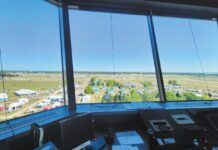A new or modified procedure is a coordinated effort among many groups, such as airports, air traffic control, local communities, and local aircraft operators, each of whom may have input into the final procedure. Once a procedure is developed and everyone is as happy as they’re going to get with it, the procedure is sent through a quality assurance review process. This process essentially rebuilds the procedure to verify criteria compliance, use of correct data, and proper documentation. Once past quality assurance, the next step in procedure approval is performing a flight inspection to look for anything unsafe or unexpected on the procedure that wouldn’t have been known during the design process.
Issues such as unknown obstacles that weren’t considered during design, signal coverage issues, or flyability concerns that need to be addressed can be flagged during flight inspection. Defects identified during quality assurance or flight inspection result in the procedure being kicked back to be re-designed. Once the procedure has passed flight inspection, it is charted and published for use. Once published, the procedure is scheduled for periodic review every two years for approaches and departures, and every four years for en-route and arrival procedures.
During a periodic review the procedure is re-built to look for things that may have slipped through the cracks since the last time the procedure was updated. These include changes to aeronautical data elements that may have an impact on the procedure, or new obstacles that may have an impact on minimums. However, it might be surprising that changes to TERPS criteria are not necessarily a consideration during a periodic review.




